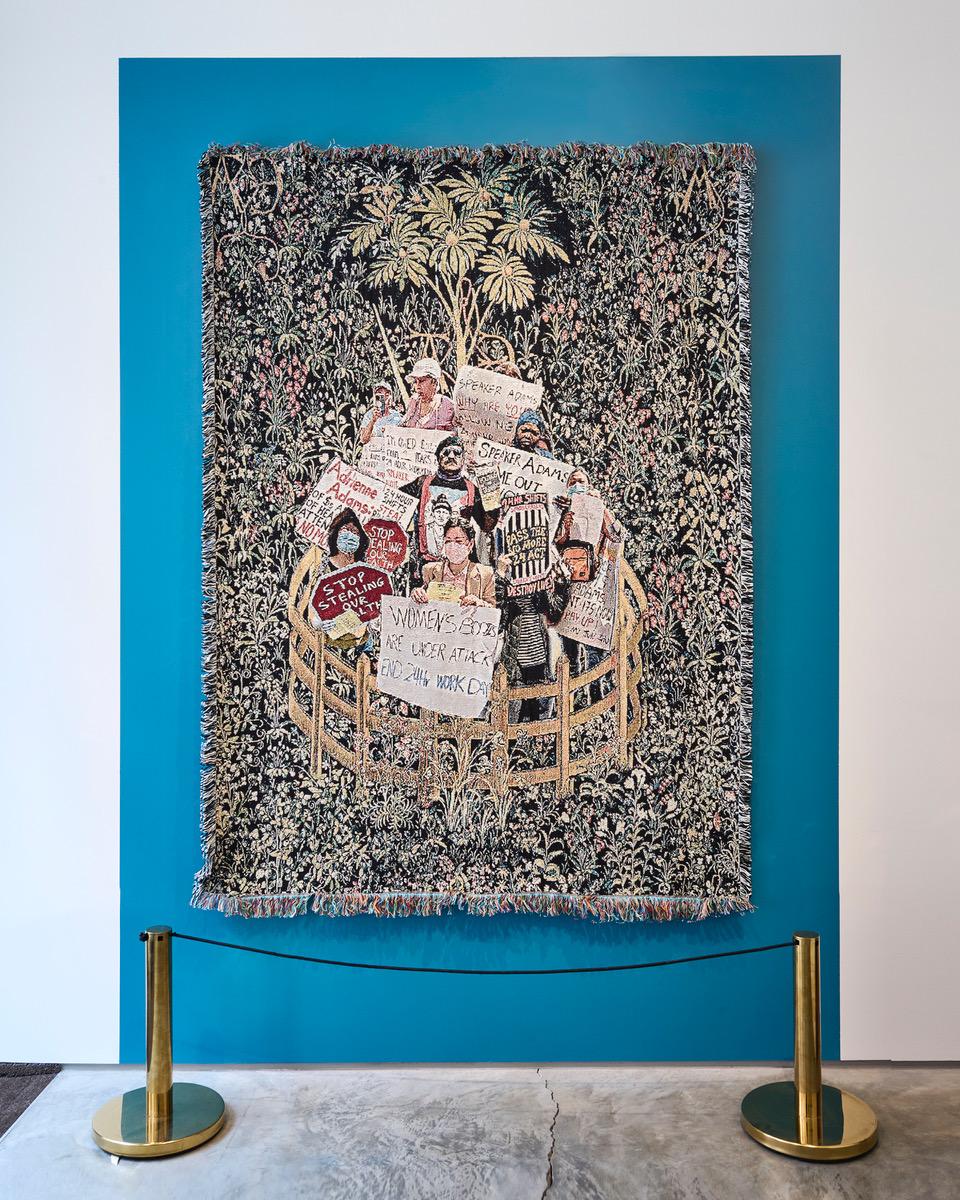The Significance of Domestic Labor


In response to the current political climate, 601Artspace, situated in Manhattan’s Lower East Side, presents a distinctive outlook on domestic labor through its exhibition: Invisible Hands. This group exhibition highlights the theme of domestic labor, as interpreted by various artists. Curated by Emireth Herrera Valdés, this show features the works of ten artists from diverse backgrounds and cultures. Whether they are descendants of migrant domestic laborers or have personally engaged in domestic labor, each artist contributes a unique perspective through socially engaged projects, sculptures, installations, performances, photography, and paintings.
The exhibition showcases an array of works by Abang-guard (Jevijoe Vitug+Maureen Catbagan), Margarita Cabrera, Brendan Fernandes, Jay Lynn Gomez, Zac Hacmon, Jamie Martinez, Patrick Martinez, Dulce Pinzón, Hernando Restrepo, Luis Alvaro Sahagun, and Betty Yu. Together, these artists examine a theme that is often deemed taboo in our contemporary society. Through their art, they explore and confront domestic labor, emphasizing its significance within the broader context of issues such as immigration, labor rights, activism, resilience, and resistance.
The exhibition serves as a tribute to the unwavering strength of domestic workers operating within an unfair system. Individuals who make daily sacrifices to uplift their families and carve out a better quality of life. Within its artistic narrative, the exhibition also pays homage to the solidarity among domestic workers who stand united, advocating for equitable wages and expanded rights, all in pursuit of collective progress and improvement.

In his terracotta sculpture series Me-Ya-AJ, My Mother’s Labor, Jamie Martinez contemplates the legacy of his mother, who worked as a housekeeper. During his teenage years, Martinez occasionally assisted her with cleaning tasks after school. He embellishes common domestic tools–an iron, a brush set, and a dustpan–with Mayan glyphs alluding to Latin American prehispanic ancestry. Martinez incorporates household cleaning activities into his creative process, mirroring his mother’s labor and infusing her energy into the sculptures.

Brendan Fernandes’ Work of Labor, a dance performed at the exhibition’s opening, examines the interplay between the physicality of dance movements and that of domestic labor. Mexican artist Dulce Pinzón stages and captures photographs of workers assuming the roles of popular superheroes like Spiderman and Catwoman, shedding light on their often uncelebrated role of financially supporting loved ones in their home countries, and the complex dual identity this engenders.

Zac Hacmon created an architectural sound intervention titled Sentry, his work stands as a monumental sculpture in the shape of a marble lobby pillar. Inspired by Hernando Restrepo, a doorman at the Museum Tower in Midtown Manhattan. Hacmon’s and Restrepo’s collaboration provides a glimpse into Restrepo’s story and artistic practice, including his painting In the Realm of Thoughts.

Abang-guard (Jevijoe Vitug + Maureen Catbagan) employs museum-like displays, exemplified by the tapestry No More 24! May Day and the sculpture Care Guardian, inspired by their experiences as security guards at the Metropolitan Museum of Art. These artworks serve as a means to address pertinent social issues. Jay Lynn Gomez’s Las Meninas, Bel Air reimagines Diego Velazquez’s Las Meninas from 1656 by placing cardboard cut-outs in opulent neighborhoods like Bel Air in California. This visual approach accentuates the hierarchical dynamics between domestic workers and their employers.

Margarita Cabrera’s sculpture Saguaro is a life-sized cactus crafted from border patrol uniforms, nestled in a terracotta pot. Betty Yu’s Working Stories scrutinizes the impact of gentrification and displacement on low-income, working-class individuals within New York City’s Chelsea neighborhood.
Invisible Hands proves to be an enlightening and meticulously curated exhibition that both stimulates thought and challenges the prevailing norms. It prompts reflection upon issues that may otherwise escape our day-to-day considerations.
Invisible Hands curated by Emireth Herrera Valdés at 601 Artspace. 88 Eldridge, NYC through September 17, 2023.
You Might Also Like
Not Straightforward or Impossible: sgp in Conversation with Alina Yakirevitch
Bjarne Melgaard’s Former Studio Manager Nicholas Cueva Just Called Him Out: The Backstory
What's Your Reaction?
Elizabeth Hazard is a creative producer and writer with several years of experience producing content for magazines, websites, brands and artists. A published author, she frequently writes about fashion, art and cultural topics for websites and publications. She also holds a certificate in curating from Node Center for Curatorial Studies in Germany.

